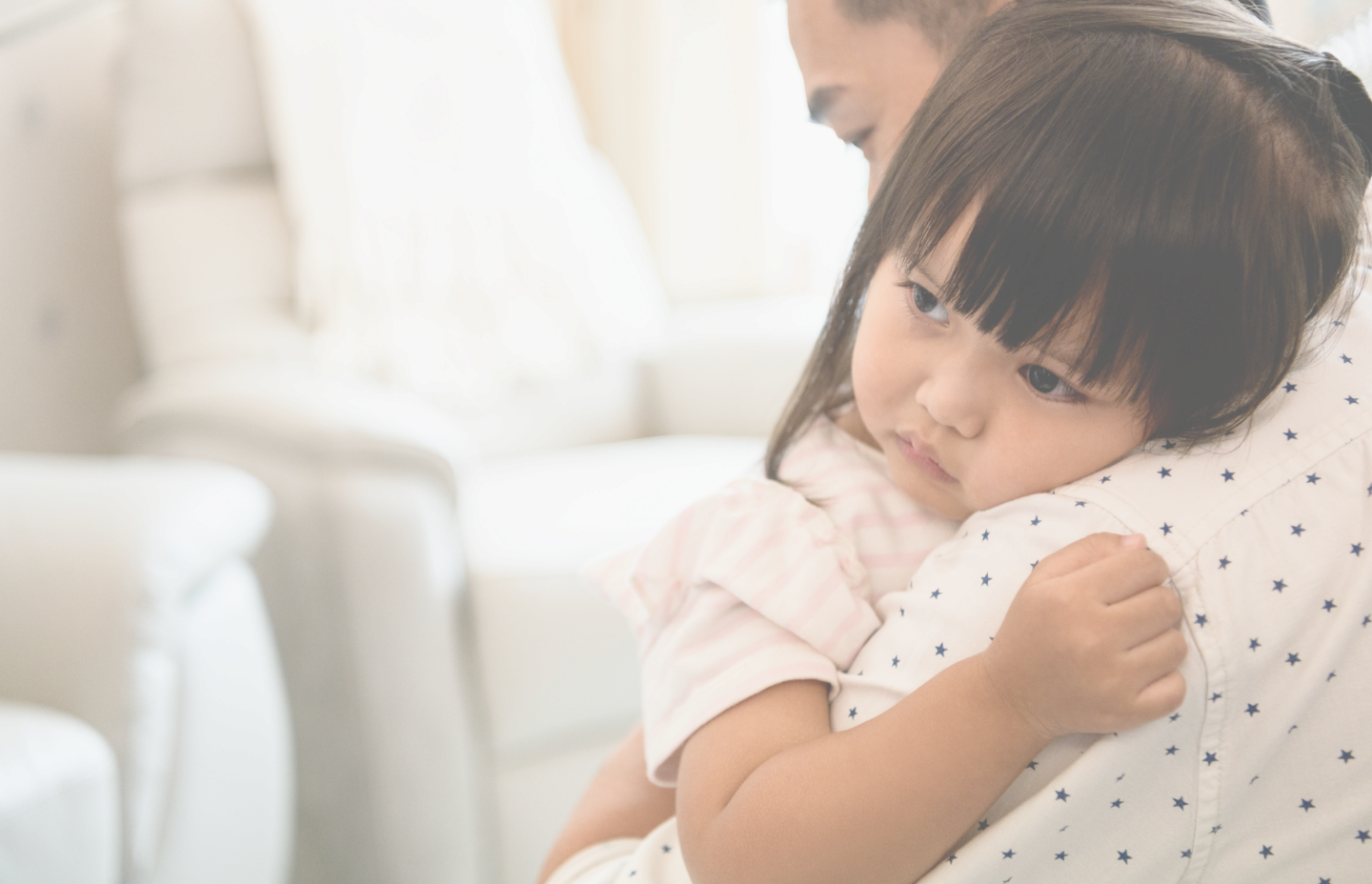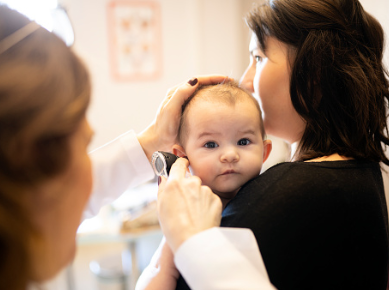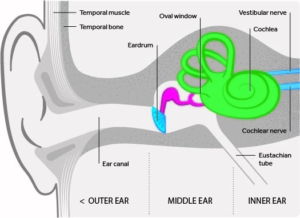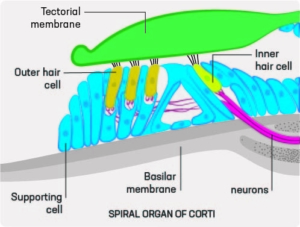Dr. Sharon Cushing of the Hospital for Sick Children in Toronto explains auditory neuropathy and discusses the outlook for treatment for children diagnosed with hearing loss.

Approximately 10% of children who are diagnosed with hearing loss at birth have Auditory Neuropathy Spectrum Disorder (ANSD or Auditory Neuropathy for short) usually due to genetic variants.
A type of sensorineural hearing loss in which the inner ear successfully detects sound but is unable to send sound from the inner ear to the brain.
Researchers report several causes of auditory neuropathy. The most common genetic cause is insufficient production of a protein called otoferlin. The otoferlin protein allows communication between the inner ear sensory cells and the auditory nerve. When the otoferlin protein is not sufficiently produced, the ear cannot communicate with the nerve and brain. This results in severe to profound hearing loss.
Auditory neuropathy is one of the most challenging forms of hearing loss to diagnose. While there are various non-genetic causes of auditory neuropathy, scientists have made substantial progress over the last two decades in identifying genetic causes of hearing loss, including ANSD. Because of these advances, a simple genetic test can now diagnose otoferlin genetic variants and other causes of genetic hearing loss.

Some but not all children may benefit from hearing aids, cochlear implants, and other technologies. Gene therapy, guided by an understanding of the complex biology of the inner ear, is also being investigated as a candidate therapy for children whose hearing loss is determined to be caused by an otoferlin genetic variant. Families may consult with their child’s doctor or hearing specialist about gene therapy options.
Learn how hearing works2A portion of the cochlea known as the organ of Corti contains hair cells that convert this fluid movement into what our brain perceives as sound. There are two types of hair cells. Outer hair cells amplify quiet sounds, while inner hair cells primarily detect and transmit sound signals to the brain via the auditory nerve. There are roughly 3,200 inner hair cells and 12,000 outer hair cells in the human organ of Corti.
3Outer and inner hair cells are arranged linearly within the cochlea tonotopic array. Hair cells at the base of the cochlea detect the highest frequencies. Those located at the apex, or tip, detect the lowest frequencies.


4For normal hearing function, a variety of additional cell types and cellular structures must work together in concert. Broadly speaking, these include (but are not limited to):
- Stereocilia: structures that project from hair cells and respond to movement of fluid within the cochlea, enabling the sensation of sound.
- Synapses: specialized connections that are required for the efficient transfer of sound information from hair cells to spiral ganglion neurons.
- The stria vascularis: a group of cells that produce endolymph, a fluid in the cochlea that moves in response to sound waves.
- Spiral ganglion neurons: cells that transmit information from the cochlea to the brain, where sound is perceived.
Damage or dysfunction within any of these cell types can occur, and lead to symptoms of hearing loss, tinnitus, or hyperacusis.
CloseEl Dr. Manuel Manrique de la Clínica Universidad de Navarra explica la neuropatía auditiva y analiza las perspectivas de tratamiento para los niños diagnosticados con pérdida auditiva.
WATCH: DR. SHARON CUSHING OF THE HOSPITAL FOR SICK CHILDREN
VER: DR. MANUEL MANRIQUE DE LA CLÍNICA UNIVERSIDAD DE NAVARRA

LEARN MORE ABOUT HEARING LOSS
To learn more about hearing loss, including auditory neuropathy, and efforts to develop and advance treatment, please visit:
Glossary of Terms
auditory neuropathy: a hearing condition in which sound enters the inner ear typically but is unable to do so as sound cannot travel from the inner ear to the brain.
cochlear implant: an electronic device that is surgically implanted and works by directly stimulating functioning auditory nerve fibers in the inner ear; cochlear implants convert sound waves to electrical impulses and transmit them to the inner ear, providing people with severe to profound hearing loss the ability to hear sounds.
congenital hearing loss: occurs when child is born with hearing loss.
gene therapy: a technique that inserts a working gene in place of missing or nonworking ones to address a genetic condition.
genetic hearing loss: hearing loss caused by genetic variants or mutation of a gene.
otoferlin: a protein (or molecule responsible for performing vital functions in our cells) created by the OTOF gene. Variations in this gene can lead to auditory neuropathy and profound hearing loss.
sensorineural hearing loss: hearing loss that occurs from damage to the inner ear, the nerve that runs from the ear to the brain (auditory nerve), or the brain.